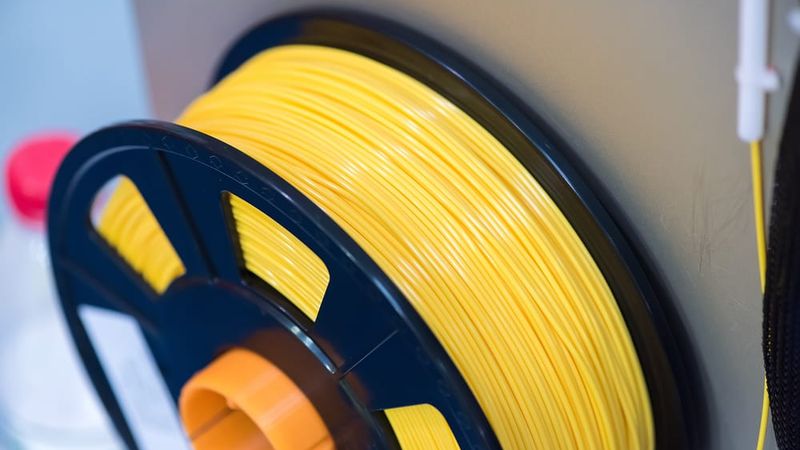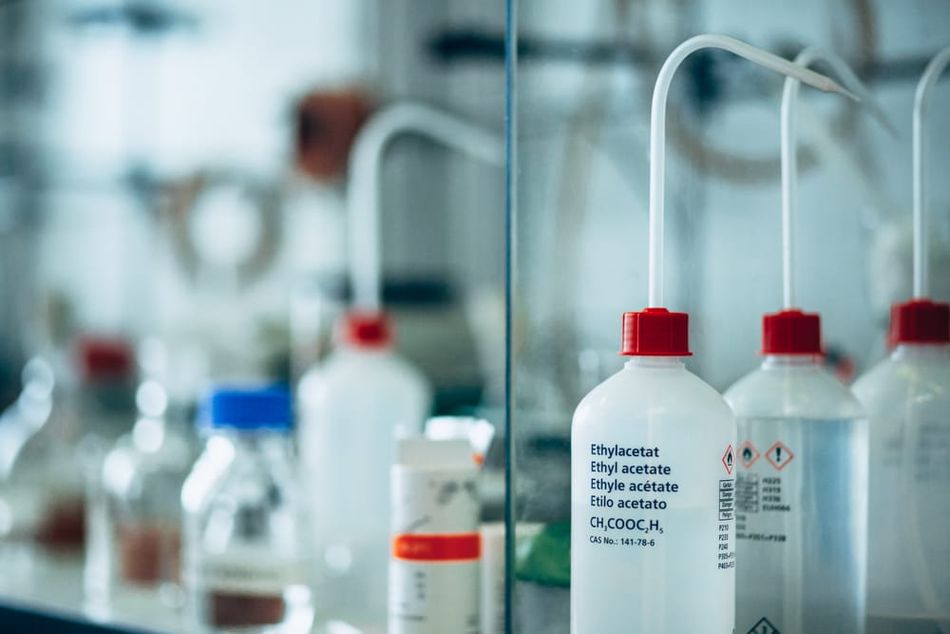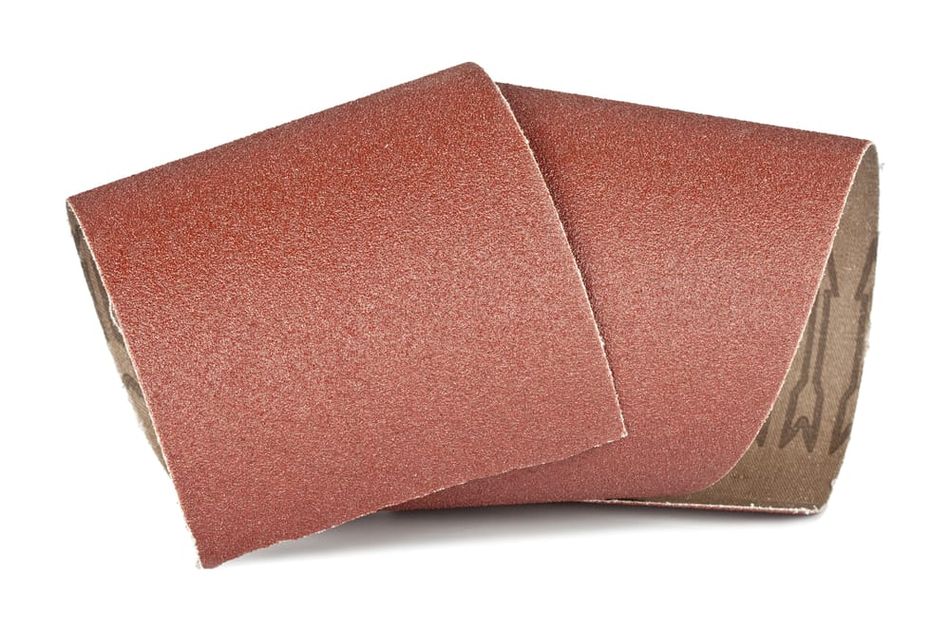PLA and Acetone? Here are Better Ways to Smooth PLA 3D Prints
While acetone works in combination with ABS, it is not viable for smoothing PLA prints. Fortunately, there are alternatives to acetone for PLA. From chemical solvents to manual techniques, here are the ways you can post-process and smooth a PLA 3D print.

PLA (polylactic acid) is one of the most popular filaments for FDM 3D printing.
PLA (polylactic acid) is one of the most widely used FDM 3D printing materials. The bio-based thermoplastic is not only among the most affordable 3D printing filaments, it is also easy to process and does not require high printing temperatures.
Despite its easy processing, PLA 3D prints are still plagued by layer lines and can suffer from surface flaws and inconsistencies. A certain degree of post-processing is therefore needed to produce high-quality prints with smooth surface finishes.
There are two main approaches to smoothing PLA prints: one involves the use of chemical solvents, which dissolve small amounts of PLA from the part surface. The other approach involves non-solvent-based processes, including sanding, melting, and surface coating. In this article we take a closer look at the different approaches to dissolving and smoothing PLA filament, evaluating the different types of solvents, as well as presenting a variety of non-solvent methods.
Recommended reading: PLA vs ABS: Which filament should one use?
Can PLA be dissolved?
It is possible to dissolve PLA filament since the thermoplastic is a soluble material. The process involves the use of solvents, such as ethyl acetate. In general, solvents are used post-printing to dissolve and remove defects or ribbing from the exterior of a 3D print. This results in a smooth, professional looking surface finish.
If a smooth PLA print is your goal, there are a number of different ways to achieve it. As we saw, you can use solvents—however special care must be taken when using these chemicals as many are toxic and dangerous. It is also possible to smooth PLA plastic without any chemicals. We’ll explore both categories of options below.
If you are dealing with a clogged extruder, you can use a solvent to remove PLA residue. This involves soaking the nozzle for a couple of hours and then carefully removing the softened PLA remnants. If you don’t want to deal with chemicals, there are also other ways of removing PLA from a hotend, such as the cold pull method.
Recommended reading: How to Clean 3D Printer Nozzles and Prevent Clogs
Dissolving PLA using chemical solvents
Here we present and discuss the chemical solvents that can be used to dissolve and smooth PLA 3D printing filament and assess their efficacy and hazard level. As a general rule, read the safety data sheet that comes with any chemical material before using it: it will indicate how to safely handle and use the chemical in question.
Acetone
Acetone is a common solvent found in a number of household products, including nail polish remover and paint removers. It is also considered to have low toxicity and is safe for occasional exposure. Acetone is, however, highly flammable.[1] Now the question is, can acetone be used to dissolve and smooth PLA prints?
Technically, acetone does degrade PLA. In practice, however, using acetone on PLA might not produce the intended result. Acetone tends to make PLA rubbery or sticky rather than fully dissolve it. This can ruin the strength and surface finish of a print.
While not the best option for smoothing PLA, acetone is highly effective for smoothing ABS. With the proper personal protective equipment (PPE) and good ventilation, you can use acetone vapor to smooth the surface of ABS rapidly.
Key takeaways:
Acetone is not effective for dissolving and smoothing PLA
Acetone is a good solvent for treating ABS
Ethyl acetate
Ethyl acetate is an organic ester compound characterized by its clear liquid form and a fruity odor. The solvent is used in certain consumer products like glue and non-acetone nail polish remover, as well as more industrial products like paint remover.[2]
As a solvent, ethyl acetate is highly effective at breaking down and dissolving PLA. By applying a small amount of the chemical to the surface of your print or using ethyl acetate vapor, you can smooth imperfections.
While ethyl acetate is not particularly toxic, it is flammable. When working with the chemical, it is important to use proper protection, like gloves, and to work in a well ventilated space.
Key takeaways:
Ethyl acetate is effective at dissolving and smoothing PLA
Ethyl acetate has low toxicity
Ethyl acetate is flammable

Methyl ethyl ketone (MEK)
Methyl ethyl ketone (MEK), also known as butanone, is an organic compound that has many applications. The solvent is used to disinfect surgical tools, clean electronics, manufacture paint, and more. Many cleaning products, varnishes, paint removers, and adhesives also contain MEK.[3]
When it comes to dissolving PLA, MEK is highly effective. MEK vapor can rapidly smooth the surface of a PLA 3D print. Despite its good results, MEK is not broadly suggested for PLA smoothing because of its toxicity and volatility. The chemical is highly flammable and potentially explosive. It can also cause irritation to the eyes, nose, and throat if breathed in. MEK is therefore mostly used in controlled industrial settings and is not recommended for home use.
Key takeaways:
MEK is highly effective for dissolving and smoothing PLA
MEK is a toxic material and can cause irritation to eyes, nose, and throat
MEK is highly flammable
Tetrahydrofuran (THF)
Tetrahydrofuran (THF) is an organic compound and a versatile industrial solvent used in resins, high polymers, adhesives, polymer coatings, paints, and more.[4] Like MEK, THF is highly effective when used in combination with PLA: its vapors can rapidly remove surface imperfections resulting in a smooth surface finish.
That being said, THF is a hazardous chemical and must be used with extreme care. If inhaled, THF can cause nausea, headaches, and dizziness, and if it comes into contact with skin, it can cause severe irritation. THF is also highly flammable, even in ambient settings. Based on these properties, THF requires full PPE, including gloves, mask, and eye protection, and is best reserved for industrial usage.
Key takeaways:
THF is highly effective for dissolving and smoothing PLA
THF is a hazardous material with potential negative health effects
THF is highly flammable
Caustic soda (sodium hydroxide)
Caustic soda, also known as sodium hydroxide or lye, is an alkali with corrosive properties. Caustic soda has many, many uses. Due to its ability to break down grease, it has been used in soap making for hundreds of years. It is also a key ingredient in detergents and drain cleaners. Additionally, caustic soda is used in the processing of fabrics, metals, and pharmaceuticals.
In the context of additive manufacturing, caustic soda can be used to dissolve PLA filament. The best results will come from diluting the corrosive solid in water (about 120 grams per liter) and briefly submerging the PLA print in the liquid. If using caustic soda to smooth your PLA print (or remove PLA support structures), be sure to use the right equipment, such as goggles, protective clothing, mask, and gloves. You should be able to find caustic soda at your local drugstore or hardware store.
Key takeaways:
Caustic soda can be used to dissolve PLA
It is a highly corrosive material and must be handled carefully
Can be found at many stores
Dichloromethane (DCM)
Dichloromethane (DCM) is an organochlorine molecule with many similarities to chloroform (the main difference between them is the number of chlorine atoms per molecule). DCM is a chemical solvent used in several industries in the production of adhesives, paints, pharmaceuticals, as well as in metal processing, chemical processing, and more.[5]
While DCM is not flammable like many of the other solvents we mentioned, exposure to the chemical can cause serious health problems. Short-term exposure can have negative effects on the nervous system, and long-term exposure can lead to liver toxicity, liver cancer, and lung cancer.
DCM is capable of dissolving PLA, however due to the health effects associated with the chemical it is not recommended for non-expert 3D printing users. If you are using DCM—though again, it is not recommended—be sure to use PPE, including gloves, body coverings, and a mask or respirator.
Key takeaways:
DCM can rapidly dissolve PLA thermoplastic
DCM is highly hazardous, and exposure can lead to serious health problems
Not recommended for home use
How to use vapor smoothing
Vapor smoothing is a common finishing technique used to improve the surface quality of printed parts. It involves exposing the printed part to a vaporized solvent. The fumes melt the outer layer of the plastic, causing it to smooth out and blend together. The vapor smoothing process typically involves placing the printed object in a sealed container with a small amount of the solvent, allowing the vapor to evenly coat the surface of the part. This is recognized as the most effective way to smooth the outer surface of a 3D print, and is far superior to directly applying the solvent of choice with a brush or submerging the entire part in the solvent.
There are dedicated vapor smoothing stations that are effective for achieving a professional finish (many with lots of automated features). However, it is also possible to make a DIY vapor smoothing station. All you need is a sealable plastic container or box (just ensure the container itself isn’t made from a material that will degrade when exposed to the solvent). Line the bottom of the container with a metal tray or rack to suspend prints above the smoothing agent. It’s also a good idea to install a fan, which can be done by cutting a hole in the container the size of the fan, or multiple small holes and placing the fan in front of them. The fan will help keep the solvent fumes circulating for a more even finish. Pour a small amount of solvent into the bottom of the container and heat the container by placing a heating pad under its base, this will encourage the solvent to vaporize.[6] It is critical to take precautions when using a DIY vapor smoothing box, particularly if any heat pad or element is used, such as PPE and proper ventilation.
Recommended reading: ABS smoothing: Acetone vapor baths & other ways to remove layer lines
Smoothing PLA without chemicals
If working with chemicals is too daunting due to the potential health risks or if solvents are not delivering the results you want, there are a number of non-chemical alternatives to smoothing and post-processing PLA prints. Let’s take a closer look.
Sanding
Sanding is one of the safest and most effective ways of smoothing a PLA print—though it can be time consuming. Depending on the dimensions and shape of your 3D print, you can use a combination of sanding blocks, sandpaper, and nail files to gradually remove the outer layer of your print.
Rub the sanding medium of your choice in circular motions all over the printed object. For the best results, rub against the grain of the print and start with a low-grit sandpaper. You can gradually increase the grit level and finish with wet sandpaper, which will leave your part smooth and polished. Since sanding is effectively removing a layer from the print’s surface, it can influence the dimensional accuracy of the printed model.

Epoxy resin
Another way of achieving a smooth surface finish for your PLA 3D prints is to add a coating to the part’s surface. Epoxy resin is a reliable option. The coating typically consists of two components: the resin and a hardener. These must be mixed together before the epoxy resin can be applied to the printed object using a brush.
The epoxy resin coating fills in any flaws or ridges on the outer surface of the printed part, resulting in a smooth surface. You can always add more epoxy resin coatings until the desired smoothness is achieved. It should be noted that this process, like sanding, can influence the dimensional accuracy of the final print, so if tight tolerances are required, an epoxy coating may not be the best option.
Primer Spray
Priming is an effective method for smoothing PLA prints, especially if layer lines are your main concern. Like epoxy resin, this method also involves adding a coating to the 3D print. In this case, however, the primer is sprayed onto the printed model. Two to three coats of primer are recommended. (Primer sprays are across the board safer to use than chemical solvents, though good ventilation is still suggested.)
Typically, priming is used in combination with sanding. Once the first layers of primer have dried, you can sand the surface until it is smooth. Why do this instead of just sanding? Two reasons. First, the primer itself is easier to sand down than PLA. Second, by adding the primer and then sanding, you are also prepping your part for painting.
Surface melting
A fourth option for smoothing PLA prints without the use of dangerous chemicals is surface melting. This method is particularly effective for larger surface areas and parts without fine details since definition can be lost in the heating process.
Using a heat gun, evenly apply hot air to the surface of your PLA part. The hot air will start to soften the surface of the print, which will reduce the appearance of layer lines and result in a smoother, shinier surface finish. Be careful though, PLA can quickly start to warp if exposed to too much heat, so check on your part often.
Recommended reading: Smoothing PLA 3D prints with sandpaper, solvents, and more
Conclusion
Ultimately, there are several different ways to dissolve and smooth PLA 3D prints. If we look at chemical processes for dissolving PLA, there are many options available, however many solvents are dangerous and must be treated with care. Non-solvent processes, such as sanding, epoxy resin, priming, and surface melting are generally safer but more time consuming.
While suitable for smoothing ABS prints, acetone does not dissolve PLA filament well.
Ethyl acetate vapor can rapidly smooth PLA prints. However, it must be used with proper PPE and good ventilation.
MEK and THF are highly flammable solvents that are not recommended for home use.
Caustic soda is highly corrosive and can smooth PLA prints when diluted in water. Proper PPE should be worn.
DCM poses serious health hazards and should not be used outside of a controlled environment for smoothing PLA.
Sanding is a safe alternative for smoothing PLA, though more time consuming than solvents.
Coatings can also reduce the appearance of lines or surface imperfections on PLA models.
Frequently Asked Questions (FAQs)
Q: Can I use acetone to smooth PLA 3D prints?
A: No, it is not recommended to use acetone to post-process PLA 3D prints. The solvent, while suitable for use with other thermoplastics like ABS, creates a sticky, rubbery surface when used with PLA, which can ruin a print’s aesthetic quality as well as structural integrity.
Q: What chemicals can be used to smooth PLA?
A: Ethyl acetate, Methyl ethyl ketone (MEK), and Tetrahydrofuran (THF) are all solvents that are effective at smoothing PLA 3D prints. However, it is not advised to use some of these chemicals (MEK and THF) in particular, as they are hazardous and highly flammable.
Q: Can I use caustic soda to smooth PLA 3D prints?
A: Yes, caustic soda (also known as lye) is an ingredient that can help to smooth the surface of PLA 3D prints when diluted with water. However, due to the highly corrosive nature of the alkali material, users should take precautions when using it, such as wearing proper PPE. The corrosive material can also degrade parts beyond the surface if used improperly.
Q: Can acetone be used as glue for PLA
A: While acetone is not an effective post-processing treatment for smoothing PLA, it can be used as an adhesive if multiple PLA components need to be secured together.
Editor’s Note: We have updated this article to correct an error in the original version. We apologize for any confusion and strive to provide accurate information to our readers.
References
[1] Acetone [Internet]. Chemical Safety Facts, October 14, 2022. Available from: https://www.chemicalsafetyfacts.org/acetone/
[2] What is Ethyl Acetate? [Internet]. Solventis. Available from: https://www.solventis.net/products/esters/ethyl-acetate/
[3] Clifton, Jessica. What are the uses of Methyl ethyl ketone? [Internet]. ReAgent, July 3, 2019. Available from: https://www.chemicals.co.uk/blog/what-are-the-uses-of-methyl-ethyl-ketone
[4] What is Tetrahydrofuran? [Internet]. Solventis. Available from: https://www.solventis.net/products/others/tetrahydrofuran/
[5] Fact Sheet: Methylene Chloride or Dichloromethane (DCM) [Internet]. United States Environmental Protection Agency, October 5, 2023. Available from: https://www.epa.gov/assessing-and-managing-chemicals-under-tsca/fact-sheet-methylene-chloride-or-dichloromethane-dcm-0#
[6] GoEngineer. How to Smooth 3D Prints the Easy Way [Internet]. Youtube, March 30, 2023. Available from: https://www.youtube.com/watch?v=XdfygdtRtsE
Table of Contents
Can PLA be dissolved?Dissolving PLA using chemical solventsAcetoneEthyl acetateMethyl ethyl ketone (MEK)Tetrahydrofuran (THF)Caustic soda (sodium hydroxide)Dichloromethane (DCM)How to use vapor smoothingSmoothing PLA without chemicalsSandingEpoxy resinPrimer SpraySurface meltingConclusionFrequently Asked Questions (FAQs)References